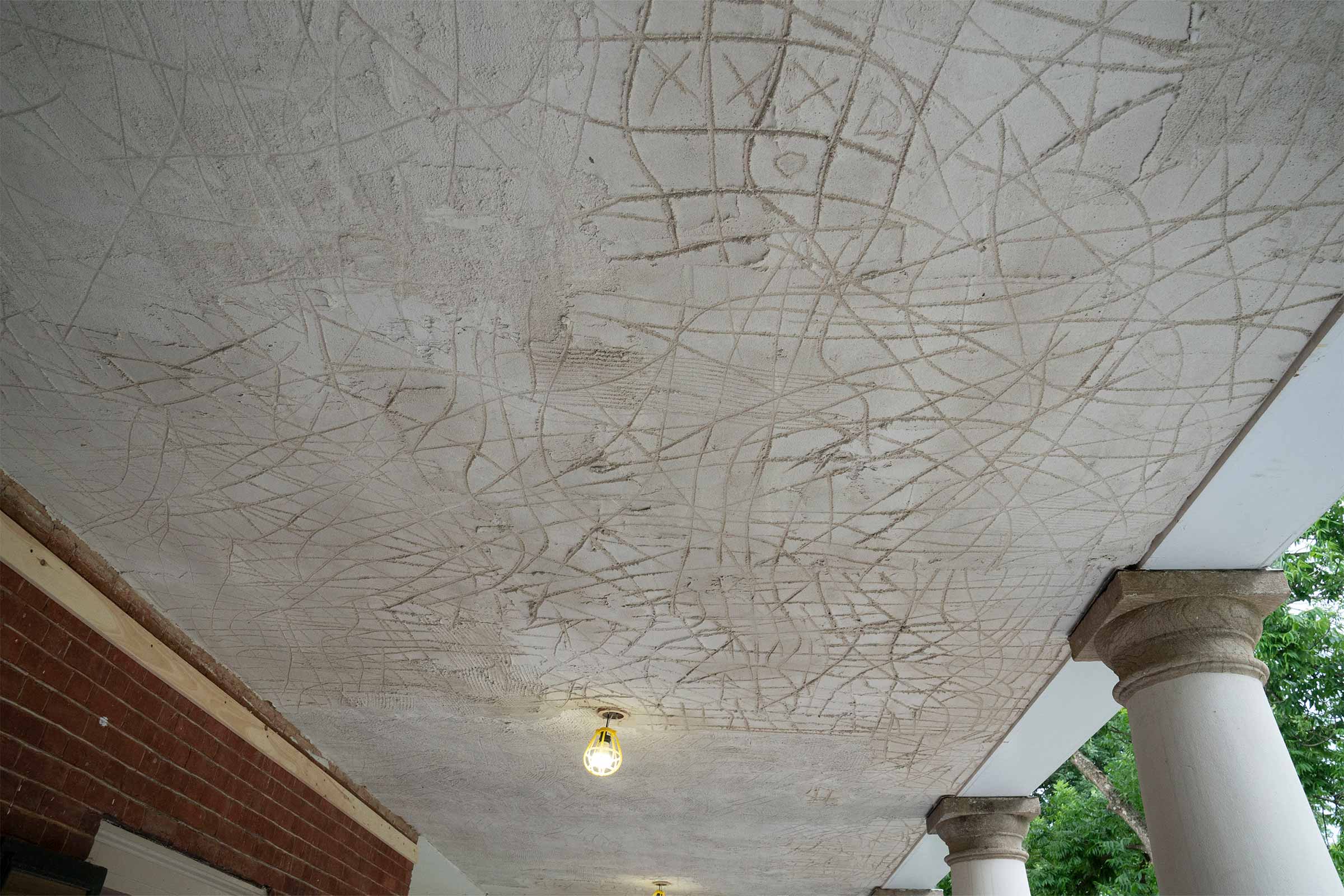Historic plasterers at the University of Virginia are using some modern techniques to restore a part of Thomas Jefferson’s historic Academical Village.
Plasterers are combining traditional lime-based plaster, reinforced with a goat-hair binder, with modern metal framework to reconstruct the ceilings over the colonnade between pavilions VIII and X. Jefferson designed the colonnades with ceilings, but they were removed in the 1830s when the colonnade roofs were replaced, according to Brian Hogg, senior historic preservation planner with the Office of the Architect.
“The ceilings make the colonnades into rooms,” Hogg said. “It gives a sense of a more finished space.”
The Office of the Architect and Facilities Management developed a multi-year project to restore the ceilings more than a decade ago and have since completed ceiling restoration on west side of the Academical Village.














